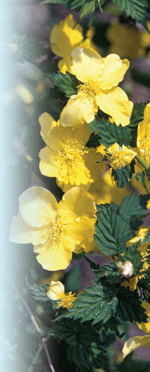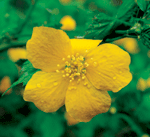Kerria Brightens the Shade
go.ncsu.edu/readext?234345
en Español / em Português
El inglés es el idioma de control de esta página. En la medida en que haya algún conflicto entre la traducción al inglés y la traducción, el inglés prevalece.
Al hacer clic en el enlace de traducción se activa un servicio de traducción gratuito para convertir la página al español. Al igual que con cualquier traducción por Internet, la conversión no es sensible al contexto y puede que no traduzca el texto en su significado original. NC State Extension no garantiza la exactitud del texto traducido. Por favor, tenga en cuenta que algunas aplicaciones y/o servicios pueden no funcionar como se espera cuando se traducen.
Português
Inglês é o idioma de controle desta página. Na medida que haja algum conflito entre o texto original em Inglês e a tradução, o Inglês prevalece.
Ao clicar no link de tradução, um serviço gratuito de tradução será ativado para converter a página para o Português. Como em qualquer tradução pela internet, a conversão não é sensivel ao contexto e pode não ocorrer a tradução para o significado orginal. O serviço de Extensão da Carolina do Norte (NC State Extension) não garante a exatidão do texto traduzido. Por favor, observe que algumas funções ou serviços podem não funcionar como esperado após a tradução.
English
English is the controlling language of this page. To the extent there is any conflict between the English text and the translation, English controls.
Clicking on the translation link activates a free translation service to convert the page to Spanish. As with any Internet translation, the conversion is not context-sensitive and may not translate the text to its original meaning. NC State Extension does not guarantee the accuracy of the translated text. Please note that some applications and/or services may not function as expected when translated.
Collapse ▲
Kerria japonica
Thomas G. Ranney ©
Japanese kerria is a fine-textured, deciduous shrub with thin attractive stems that provide subtle ornamental interest in winter and yellow flowers in the spring. This shrub is also known as the “Easter Rose” as it often is in flower every year around Easter, and is also a member of the Rose family. It has an arching habit that becomes rounded with age. Kerria matures at a height of 5 feet and grows to 6 feet wide. There are two variants: one has pom-pom type flowers and the other had single flowers. This is a shrub that not only grows and thrives in full shade, but also flowers. It is a great choice for a difficult shady spot that calls for large shrub.
Kerria will tolerate a variety of soils, but prefers well-drained, slightly acidic soils. It is hardy in zones 4 to 9, and is heat and drought tolerant. To add to its desirability, it has few disease or pest problems. It is tolerant of heavy pruning, which helps rejuvenate older plants. In the spring, the foliage emerges as a bright medium green color that changes to dark green as the season progresses. In the fall the color turns chartreuse and persists through November. From April through May, kerria boasts bright yellow flowers.

Kerria japonica
Connie Little ©
This shrub is a good choice for a woodland garden and makes for great winter interest when planted against stone or a wall of red or white brick. Kerria is also excellent for naturalizing an area and preventing soil erosion. If there is any drawback to this plant, it is a tendency to spread moderately via underground suckers.
At the JC Raulston Arboretum in Raleigh you can see Kerria japonica ‘Honshu’ and ‘Chiba Gold.’ ‘Honshu’ has larger, 2-inch, single, sunny yellow flowers with petals that overlap and give a fuller effect. The shrub has the same arching habit as winter jasmine, but is slightly smaller, growing up to 5 feet tall but only 3 feet wide. Kerria japonica ‘Chiba Gold’ is a newly introduced gold-leaf cultivar that originated in Japan. It stands 3 to 6 feet tall and has a colonizing habit.


